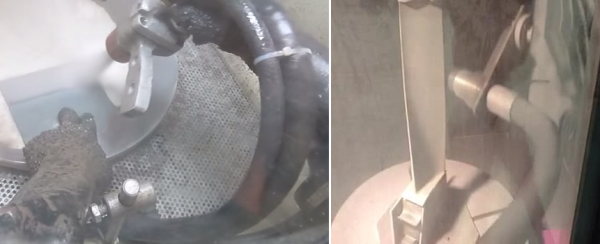Robotic automation of blasting processes represents a new alternative for those trying to steer clear of the risks of occupational injuries that may be associated with extensive use of manual blasting equipment. Robots thrive on repetitive motion.

Whether you refer to these potentially debilitating conditions as repetitive motion disorder, repetitive stress syndrome, carpal tunnel or another similar term, the avoidance of liabilities that can stem from such on-the-job injuries is now a topic of great interest to people looking for solutions to protect employees and improve productivity.
In the case of manual blasting, at issue is not simply the weight and grip of the blast gun and the range of motion in involved in repeated blasting routines, but also the potential exposure to vibration that may be transmitted during use of the blast nozzle and the resistance that may be encountered when bending stiff blast hoses. Of course, the total number of hours of exposure per day is the most important factor to consider.
Automation To The Rescue
Manufacturing engineers have risen to the challenge posed by these risks, finding ways to get machines to do some of the repetitive blasting tasks. Health and safety considerations may be one of the most important reasons to automate hand blasting operations, but there are usually other factors that weigh in the decision, including the need for more consistent finish quality, cost reduction and increased processing capacity.
If you are working with components of relatively simple geometry, the blast process can often be automated economically using a multiple-gun machine with linear or oscillating motion of the blast guns, or even a wheel blast machine.
For example, when the parts to be blasted are cylindrical in shape, an adjustable-speed rotary blasting system with a programmable actuator to move one or more pre-positioned blast nozzles might be entirely capable of producing the desired finish with a sufficient degree of repeatability.
Blasting Robots
A robotic blast system may be an especially attractive alternative for automation of unwanted manual blasting if one or more of the following circumstances apply:
- when you are processing complex-shaped components
- when the quality of surface preparation is critical
- when consistent uniformity of finish is required
- when you need flexibility to adapt to future changes
One characteristic of robotic blast machines is their ability to precisely follow the contours of the work piece, whatever shape, while constantly maintaining the correct nozzle angle, stand-off distance and surface speed. That is how a blasting robot can keep the amount and intensity of exposure consistent and get the surface treatment work done without leaving some areas of the component under-blasted or over-blasted.
Once the blasting parameters and motion routines for processing a particular component are programmed, the robotic blast system will repeatedly execute the identical process without variation, whenever presented with that part. This makes robotic blasting well-suited to high mix manufacturing and repair operations. It also accounts for the dramatic impact of the introduction of robotic blasting technology on part-to-part and lot-to-lot finish quality.
Robots thrive on repetitive motion.



